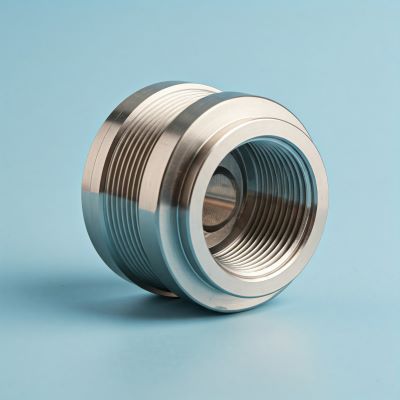Fluid line fittings are essential components in many industries, including plumbing, hydraulics, and pneumatics. They are used to connect pipes and hoses, ensuring a leak-free and reliable fluid flow. However, even experienced professionals can make mistakes when working with fluid line fittings, leading to costly repairs, system failures, and even safety hazards.
In this blog post, we will discuss some of the most common mistakes in fluid line fitting and how to avoid them.
Understanding Fluid Line Fitting Basics
Proper fluid line fittings are the backbone of efficient and safe fluid systems. These components ensure seamless fluid transfer across various systems, maintaining pressure and preventing leaks. When overlooked, even the smallest fitting issue can lead to costly downtime or hazardous failures.
Key components of a reliable fluid connection include the fitting itself, the hose or pipe, and the sealing elements. Together, these parts must work in harmony to handle system-specific requirements like pressure, temperature, and flow rate.
Fluid line fittings are critical in industries such as manufacturing, agriculture, and aerospace, where system reliability is non-negotiable. However, these applications often come with unique challenges, such as high-pressure demands or corrosive environments, which can complicate the process.
5 Common Mistakes in Fluid Line Fitting
Selecting the Wrong Fitting for the Job
Matching fittings to system specifications is not just a recommendation; it’s a necessity. Each system has unique parameters—pressure ratings, temperature ranges, and fluid types—that dictate the type of fitting required. Using an incompatible material, for example, can lead to corrosion, leaks, or even catastrophic system failure.
Choosing the correct size and type of fitting is equally vital. An oversized fitting can result in inefficiencies, while an undersized one can cause dangerous bottlenecks. When in doubt, consult manufacturer guidelines or experts who can help identify fittings tailored to your system’s needs.
Improper Installation Techniques
Another common mistake in fluid line fitting is improper installation techniques. This can include over-tightening fittings, misaligning fittings, or not using the correct tools.
➡️ Over-tightening and its impact on system integrity
Over-tightening fittings can damage the threads and lead to leaks. It is important to tighten fittings to the manufacturer’s specifications.
➡️ Misalignment issues and how to correct them
Misaligned fittings can also lead to leaks. It is important to ensure that the fittings are properly aligned before tightening them.
Neglecting Regular Maintenance
Another common mistake in fluid line fitting is neglecting regular maintenance. This can lead to wear and tear on the fittings, which can eventually lead to leaks.
How wear and tear affect fluid line fittings over time
Over time, fluid line fittings can experience wear and tear from exposure to the elements, vibration, and thermal cycling. Leaks may result from this weakening of the fittings.
Signs of damage to watch out for
Some signs of damage to watch out for include:
-
Corrosion
-
Cracks
-
Dents
-
Loose fittings
It is important to establish a proactive maintenance schedule to inspect your fluid line fittings for damage and replace any damaged fittings.
Overlooking Environmental Factors
Environmental factors play a significant role in fluid line fitting performance. Extreme temperatures can cause materials to expand or contract, while high pressure can push fittings beyond their tolerance levels. Additionally, exposure to certain chemicals can corrode materials not designed to withstand them.
To combat these challenges, always select fittings that align with your specific environmental conditions. Look for options with enhanced durability, such as stainless steel for corrosive environments or PTFE seals for high temperatures. Planning for environmental factors upfront ensures long-term system reliability.
Ignoring Safety Standards and Guidelines
Another common mistake in fluid line fitting is ignoring safety standards and guidelines. This can lead to accidents and injuries.
It is important to adhere to all applicable safety standards and guidelines when working with fluid line fittings. This includes using the correct tools and personal protective equipment (PPE).
Some common safety oversights in fluid line fitting include:
➡️ Not using the correct tools
➡️ Not wearing PPE
➡️ Not following the manufacturer’s instructions
➡️ Not checking for leaks after installation
Check out these other resources ⬇️⬇️⬇️
Hydraulic Flare Fittings: A Guide to Better Performance
Top Hydraulic Fittings for Tractors: Boosting Performance
How to Avoid Common Mistakes in Fluid Line Fitting
Here are some tips for avoiding common mistakes in fluid line fitting:
➡️ Conduct a pre-installation checklist.
➡️ Invest in high-quality fittings and tools.
➡️ Leverage expert advice and resources.
Conducting a pre-installation checklist
Before starting any fluid line fitting project, it is important to conduct a pre-installation checklist. This will help you to ensure that you have all of the necessary materials and tools. It will also help you to identify any potential problems with the project.
Investing in high-quality fittings and tools
It is important to invest in high-quality fittings and tools. This will help to ensure that your fluid line system is reliable and leak-free.
Leveraging expert advice and resources
If you are not sure how to properly install fluid line fittings, it is important to seek expert advice. There are many resources available online and in person that can help you.
Wrapping Up
Proper fluid line fitting is essential for the safe and reliable operation of many systems. By following best practices, you can help to prevent leaks, system failures, and accidents.
It is important to stay up-to-date on the latest best practices in fluid line fitting. This can be done by attending training courses, reading industry publications, and networking with other professionals.
Here are some final tips for maintaining a safe and efficient fluid line system:
➡️ Inspect your fittings regularly for signs of damage.
➡️ Replace any damaged fittings immediately.
➡️ Keep your fittings clean and free of debris.
➡️ Use the correct tools and PPE when working with fluid line fittings.
By following these tips, you can help to ensure that your fluid line system is safe and efficient.
Post time: Dec-17-2024


